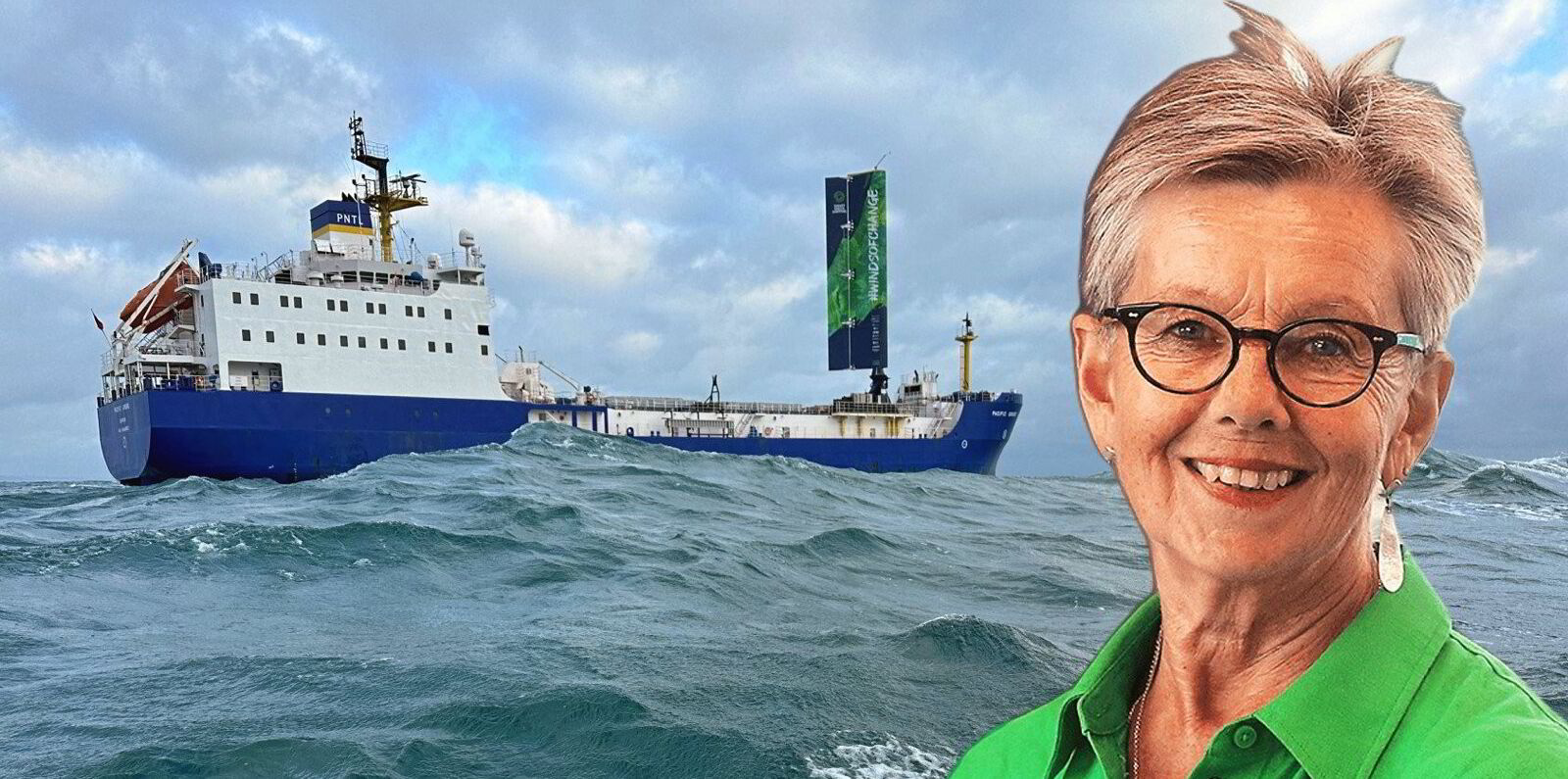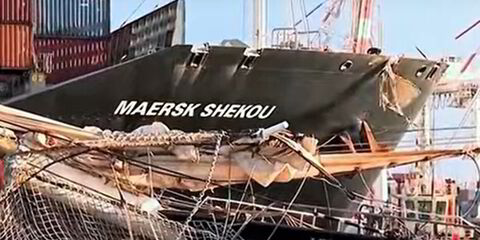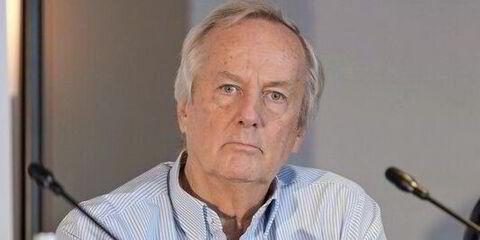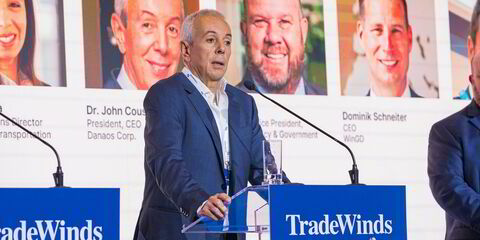After 20 years, Di Gilpin saw her idea come to fruition when a UK-flagged nuclear waste carrier left Barrow two weeks ago with her FastRig wing sail secured on its deck.
But the journey is far from over. The rig is only a temporary addition to the vessel, it will be removed once the trials are completed and the data and learnings will be assessed.
By her own admission Gilpin is tenacious, resilient and certainly not one to surround herself with naysayers who think there is no future in wind propulsion in the modern shipping industry.
TradeWinds caught up with her in Southampton, UK, at an event to showcase sea trials of the rig on the 4,902-dwt Pacific Grebe (built 2010).
What Gilpin has done though is not just surround herself with environmental dreamers and engineers.
Over the years she has courted the views of shipowners, cargo owners, financiers, insurers and naval architects, to work out the technology and a business model to support her goal of getting her system accepted in shipping.
“Ultimately nothing in that wing sail is particularly innovative in its own right. What we have done is bring together existing technology from cranes, wind turbines, aircraft wings, and Americas Cup [yacht racing] technology,” Gilpin told TradeWinds.
“We have combined proven technologies in a novel way to create a solution that is easily retrofittable,” she said.
“What this enables the shipowner to do is to install the technology during a specific charter or contract where there is a need for a greener charter, and then take it off at the end.”
There in lies Gilpin’s and Smart Green Shipping’s unique selling point.
It wants to rent out the wind by offering a solution that can be installed temporarily when cargo owners demand greener tonnage and then removed if not needed.
She has been talking to Bimco about contract clauses, and marine insurers to get off-the-shelf solutions to make things easy for owners and charterers.
SGS is not the only company selling wind propulsion technologies into an industry facing serious regulatory challenges in the coming year as fuel EU Maritime and even a revised carbon intensity indicator from the IMO put pressure on shipping to clean up its act.
SGS is somewhat behind the curve as competitors with rotor sails, wingsails and kites see orderbooks begin to flourish. To date there are about 44 vessels with various wind propulsion systems onboard with an orderbook for many more.
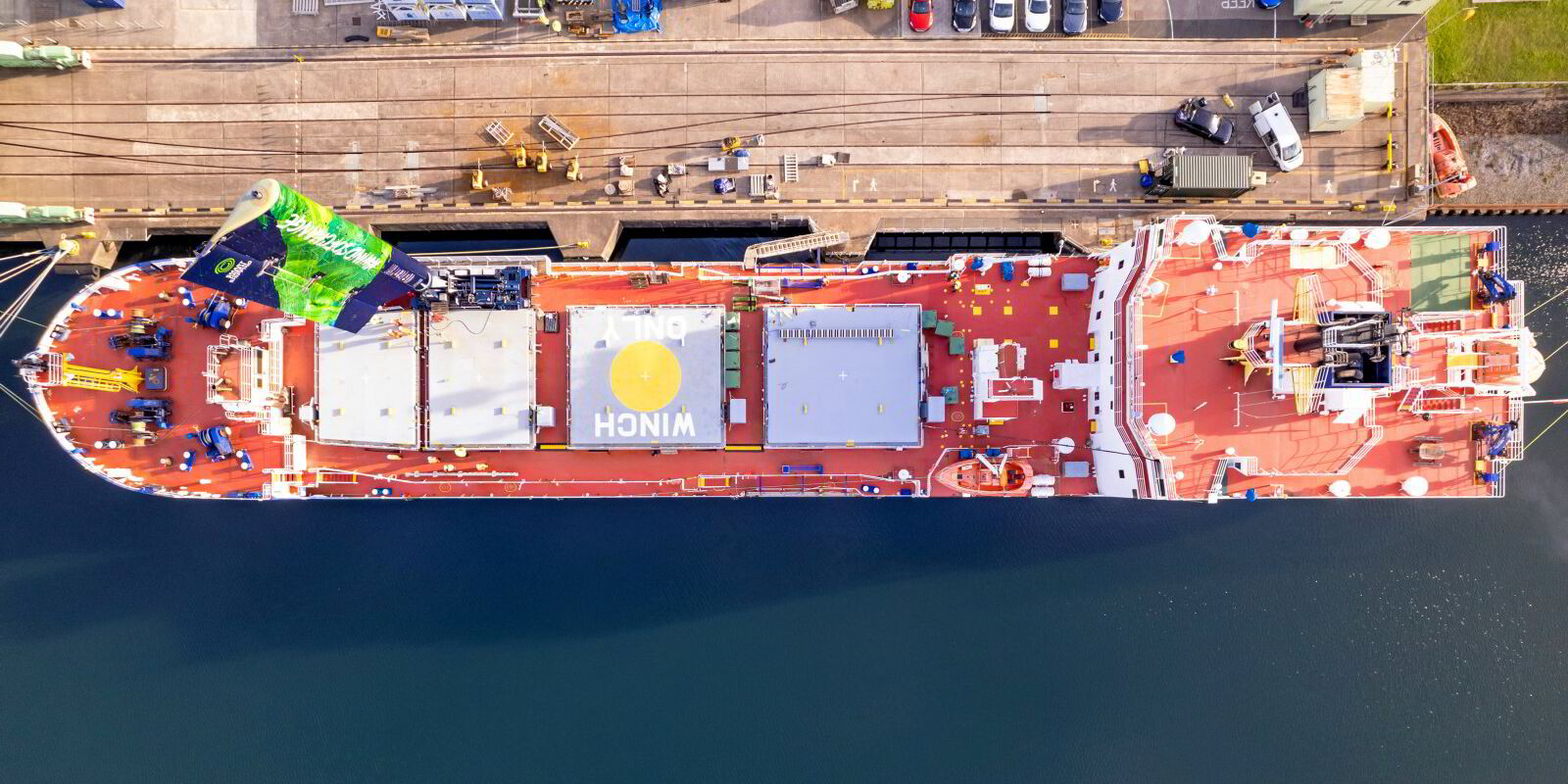
Gilpin is not distracted by this. She knows there are criticisms of some of the other systems and says she understands the needs to have a belt and braces approach.
This is why, she said, the installation onboard Pacific Grebe went ahead.
The vessel owner Nuclear Transport Solutions is particularly prickly when it comes to safety and security and was not going to allow the rig to be installed unless all its safety demands were met.
During a public event in Southampton, the ship was kept out of bounds to those who were invited to celebrate the success of the start of trials, with the crew and captain forbidden from giving media interviews.
But this approach has helped SGS ensure it can tell its own positive story about the rig it has installed.
The next phase for Gilpin, when the rig is removed, will be more daunting though.
It will need to openly confer with its latest backer, the UK energy company Drax, and other investors such as MOL Drybulk, about the performance of the rig on the ship to convince them to place a first commercial order.
The valley of death
This is the valley of death for many technology startups. They may have secured the funding for research, development and trials, but will need the funds to move to commercialisation. They need a steady orderbook.
“The valley of death is very real. It is scary, but it is all the valley of death if you never make the next funding round,” conceded Gilpin.
“This project has five months to go and we have to get the data out of the wingsail tests, and we even have recommendations from the ship's master for the second iteration (of the rig)."
Smart GreEn Shipping will need to make sure the numbers stack up for its backers, that the fuel savings predicted were achieved, that new wingsails can be built quickly and that the price is of course attractive to them.
"So how much fuel we save, and how to make a cost-benefit analysis will underpin their business decisions," she added.
Then, and only then will Di Gilpin believe she has made it.(Copyright)
